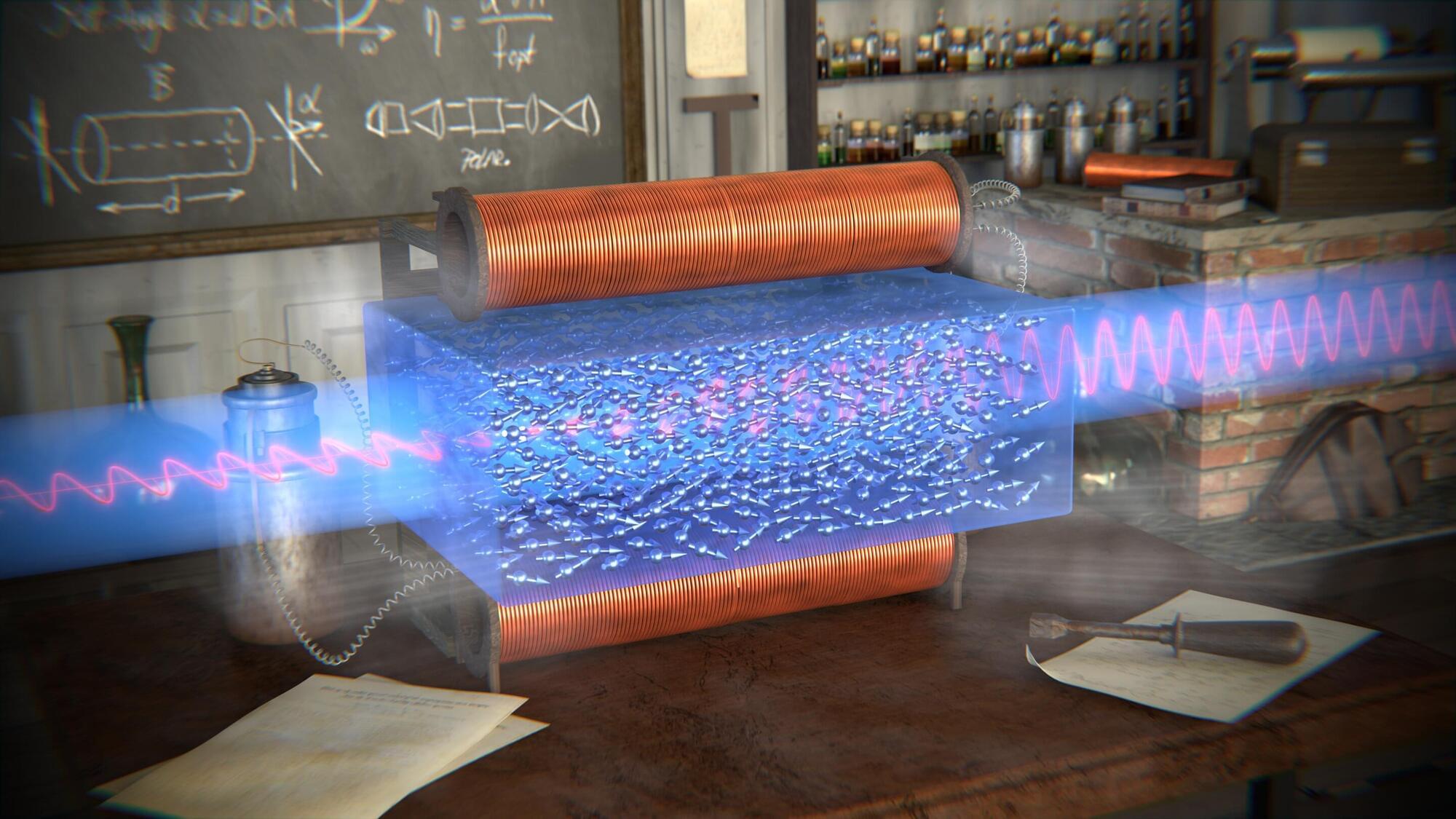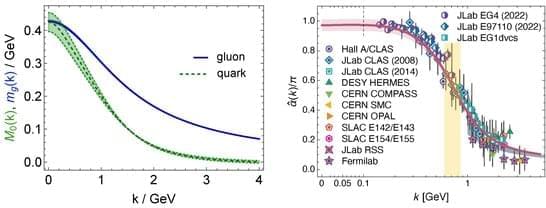A Princeton team built a new tantalum-silicon qubit that survives for over a millisecond, far surpassing today’s best devices. The design tackles surface defects and substrate losses that have limited transmon qubits for years. Easy to integrate into existing quantum chips, the approach could make processors like Google’s vastly more powerful.
Get the latest international news and world events from around the world.

Quantum computers could be powerful enough to decrypt Bitcoin sometime after 2030, CEO of Nvidia’s quantum partner says
“You should have a few good years ahead of you but I wouldn’t hold my Bitcoin,” Peronnin said, laughing. “They need to fork [move to a stronger blockchain] by 2030, basically. Quantum computers will be ready to be a threat a bit later than that,” he said.
Quantum doesn’t just threaten Bitcoin, of course, but all banking encryption. And it is likely that in all these cases companies are developing quantum resistant tools to upgrade their existing security systems.
Defensive security algorithms are improving, Peronnin said, so it’s not certain when the blockchain will become vulnerable to a quantum attack. But “the threshold for such an event is coming closer to us year by year,” he said.

Clogged ‘drains’ in the brain likely an early-warning sign of Alzheimer’s disease
“Drains” in the brain, responsible for clearing toxic waste in the organ, tend to get clogged up in people who show signs of developing Alzheimer’s disease, a study by researchers from Nanyang Technological University, Singapore (NTU Singapore) has discovered.
This suggests that such clogged drains, a condition known as “enlarged perivascular spaces,” are a likely early-warning sign for Alzheimer’s, a common form of dementia.
“Since these brain anomalies can be visually identified on routine magnetic resonance imaging (MRI) scans performed to evaluate cognitive decline, identifying them could complement existing methods to detect Alzheimer’s earlier, without having to do and pay for additional tests,” said Associate Professor Nagaendran Kandiah from NTU’s Lee Kong Chian School of Medicine (LKCMedicine) who led the study.

New magnetic component discovered in the Faraday effect after nearly two centuries
Researchers at the Hebrew University of Jerusalem discovered that the magnetic component of light plays a direct role in the Faraday effect, overturning a 180-year-old assumption that only its electric field mattered.
Their findings, published in Scientific Reports, show that light can magnetically influence matter, not just illuminate it. The discovery opens new possibilities in optics, spintronics, and quantum technologies.
The study was led by Dr. Amir Capua and Benjamin Assouline from the Institute of Electrical Engineering and Applied Physics at the Hebrew University of Jerusalem. It presents the first theoretical proof that the oscillating magnetic field of light directly contributes to the Faraday effect, a phenomenon in which the polarization of light rotates as it passes through a material exposed to a constant magnetic field.
‘Blood clots surge like never before…’: Dr McCullough’s chilling revelations on mRNA COVID vaccines
321 watching now • Started streaming on Nov 17, 2025 • #news #latestnews #economictimes
“Microtubules as Fractal Time Crystals: implications for life and consciousness” by Stuart Hameroff
This is a ~1 hour 20 min talk and discussion titled(https://hameroff.arizona.edu/).
JWST Just Finds Objects Much Older Than The Universe & Nobel Scientist Claims It’s Another Universe
#webbtelescopeimage.
#darkmatter #darkenergy #einstein #blackhole #cosmicmicrowavebackground #bigbang #oldergalaxies.
Evidence of Primordial black hole — https://www.sciencealert.com/jwst-may-have-found-the-first-d…black-hole mysterious red dots — https://archive.ph/8UUt4
Most distant objects ever discovered candidates-https://arxiv.org/abs/2503.
Scientists are starting to rethink what they thought they knew about the universe, thanks to the latest discoveries from the James Webb Space Telescope. In its new images of the farthest regions of space, Webb has revealed things that current theories simply cannot explain.
For the first time, scientists may have found signs of an entirely new kind of black hole—something that challenges the traditional Big Bang model. Webb has also uncovered record-breaking distant galaxies that look far stranger than expected, leaving experts puzzled. On top of that, the telescope has spotted many mysterious objects in huge numbers—but no one really knows what they are.
Even more surprising, some of these discoveries suggest that our universe could be part of something much bigger and stranger than we ever imagined. Let’s explore what scientists have actually discovered—and how these findings suggest that something may exist beyond our universe.
Grigory Tikhomirov | DNA-Based Molecular Manufacturing for Biotech and Electronics
*This video was recorded at ‘Paths to Progress’ at LabWeek hosted by Protocol Labs & Foresight Institute.*
Protocol Labs and Foresight Institute are excited to invite you to apply to a 5-day mini workshop series to celebrate LabWeek, PL’s decentralized conference to further public goods. The theme of the series, Paths to Progress, is aimed at (re)-igniting long overdue progress in longevity bio, molecular nanotechnology, neurotechnology, crypto & AI, and space through emerging decentralized, open, and technology-enabled funding mechanisms.
*This mini-workshop is focused on Paths to Progress in Molecular Nanotechnology*
Molecular manufacturing, in its most ambitious incarnation, would use programmable tools to bring together molecules to make precisely bonded components in order to build larger structures from the ground up. This would enable general-purpose manufacturing of new materials and machines, at a fraction of current waste and price. We are currently nowhere near this ambitious goal. However, recent progress in sub-fields such as DNA nanotechnology, protein-engineering, STM, and AFM provide possible building blocks for the construction of a v1 of molecular manufacturing; the molecular 3D printer. Let’s explore the state of the art and what type of innovation mechanisms could bridge the valley of death: how might we update the original Nanotech roadmap; is a tech tree enough? how might we fund the highly interdisciplinary progress needed to succeed: FRO vs. DAO?
*About The Foresight Institute*
The Foresight Institute is a research organization and non-profit that supports the beneficial development of high-impact technologies. Since our founding in 1986 on a vision of guiding powerful technologies, we have continued to evolve into a many-armed organization that focuses on several fields of science and technology that are too ambitious for legacy institutions to support. From molecular nanotechnology, to brain-computer interfaces, space exploration, cryptocommerce, and AI, Foresight gathers leading minds to advance research and accelerate progress toward flourishing futures.
*We are entirely funded by your donations. If you enjoy what we do please consider donating through our donation page:* https://foresight.org/donate/
Dr. Eric Drexler — The Path to Atomically Precise Manufacturing
Eric Drexler is a Senior Visiting Fellow at the Oxford Martin School, and a pioneering nanotechnology researcher and author. His 1981 paper in the Proceedings of the National Academy of Sciences established fundamental principles of molecular engineering and identified development paths leading to advanced nanotechnologies.
In his 1986 book, Engines of Creation, he introduced a broad audience to the promise of high-throughput atomically precise manufacturing, a prospective technology using nanoscale machinery to guide molecular motion and bonding, thereby structuring matter from the bottom up.
Link to full video: • Nanotechnology: the big picture with Dr Er…
Recorded: 2016

Electroexcitation of Nucleon Resonances and Emergence of Hadron Mass
Developing an understanding of phenomena driven by the emergence of hadron mass (EHM) is one of the most challenging problems in the Standard Model. This discussion focuses on the impact of results on nucleon resonance (N• electroexcitation amplitudes (or γvpN* electrocouplings) obtained from experiments during the 6 GeV era in Hall B at Jefferson Lab on understanding EHM. Analyzed using continuum Schwinger function methods (CSMs), these results have revealed new pathways for the elucidation of EHM. A good description of the Δ(1232)3/2+, N(1440)1/2+, and Δ(1600)3/2+ electrocouplings, achieved by CSM analyses that express a realistic dressed quark mass function, sheds light on the strong interaction dynamics underlying EHM. Extensions to N* studies for higher-mass states are outlined, as well as experimental results anticipated in the 12 GeV era at Jefferson Lab and those that would be enabled by a further increase in the beam energy to 22 GeV.